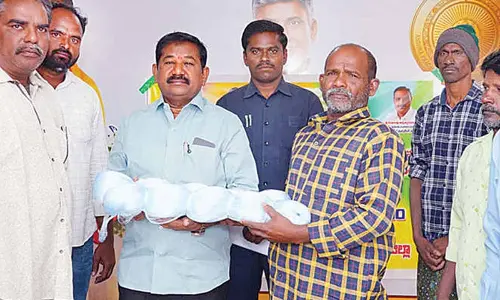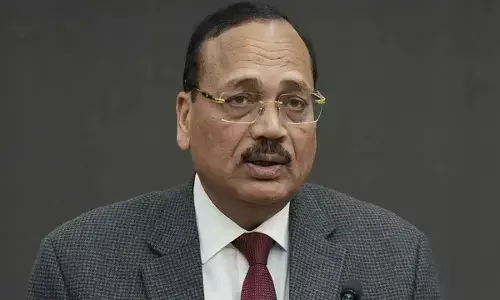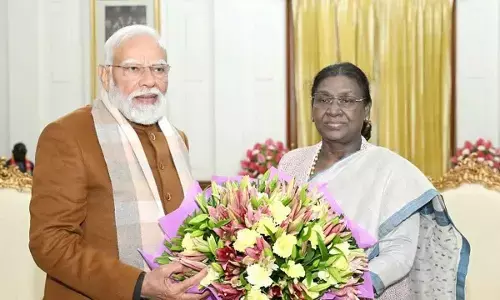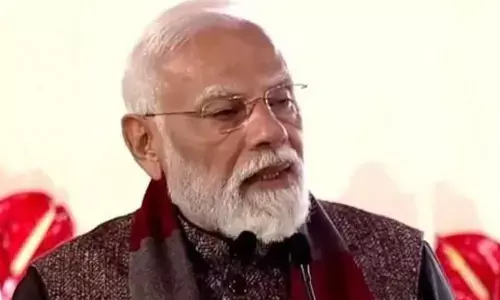We all are aware of what “metering” can do, and its significance. We face metering every day in some form or other. The electricity metering, auto rickshaw metering, taxi metering are some examples. We use these services with thought and concern, as their affect on monetary terms is direct and immediate.
Metering and waste reduction
An upper-middle-class apartment complex with 32 families in Tarnaka often faced shortage of water. The residents had to incur heavy expenditure for getting water by tankers.
.jpg)
They then decided to introduce water meters for each flat in the apartment in addition to the Metro Water meter for bulk supply to the apartment complex. The proposal was meant to monitor actual consumption by each flat. It was also decided to charge the residents of each flat for excess consumption recorded by the meter, over and above the base limit. The proposal was mutually agreed and individual meters were fixed.
Lo and behold…. from that day onwards, there was no shortage of water. The same quantum of water which was received earlier from Metro Water Supply became adequate to meet the requirements of all the apartments, as water was used with care and concern to minimise the monitory impact. Each resident careful used water.
A small step of water metering made the lives of 32 families comfortable inturn appealing to their consciousness about water conservation. They could not only avoid purchasing additional water by tankers (about 20 Tankers costing around Rs 7000 per month), the attitudinal change addressed a bigger subject, resource conservation.
Hyderabad Metro Water Board struggling to stay afloat Hyderabad Metropolitan Water Supply and Sewerage Board (HMWS&SB) is reported to be on the verge of a financial breakdown with its deficit rising every month. Its revenue is estimated to be Rs 63 crore per month, while its overheads run into Rs93 crore, leaving a shortfall of Rs 30 crore every month.
The water board seems to be looking for the Govt. clearance to increase the water tariff or for a financial support by grants to bridge the increasing gap. Both these options are likely to burden the consumers who are already overburdened. The right approach for the water board is to maximise the revenue by plugging the water pilferage/ leakages / wastages.
Metering & water balancing
The basic approach is to meter, account and monitor every litre of water, in the entire supply chain right from the reservoir to the consumer end, covering the quantity of water billed, supplied free, lost in leakages, pilferage, etc. This can be achieved by installing reliable and tamper proof water meters at all stages of water supply system ensuring every water supply connection, including free water supply, has a meter. These must also be maintained in good order.
This will enable accurate “water balancing/accounting” at all stages of water supply and distribution systems, eliminating or even minimising unauthorised connections, pilferage, malpractices, etc bringing accountability for every litre of water being supplied from the reservoir.
Thus the water board will be able to improve the efficiency of water supply and distribution systems for maximising the revenue without the need for increase the tariff.
How much water do we need?
An average urban middle class family of five, having most of the white goods like washing machines, hot water heaters, grinders etc, consumes around 1500 litres of water each day, working out to 300 Litres Per Day (LPD) per head, every day. This Urban usage/wastage of 300 LPD is a real luxury, when compared to most rural people make do with 20 to 30 LPD, each day.
Do you know?
It requires about 2000 to 3000 litres of water to grow paddy required for one kilo gram of rice.
If 10 grams of rice is wasted, about 20 to 30 litres of water is being wasted …the requirement of water per day for one person in rural area urban slum.
Water is too precious to be wasted. Conserve water- save life.

.jpg)




















